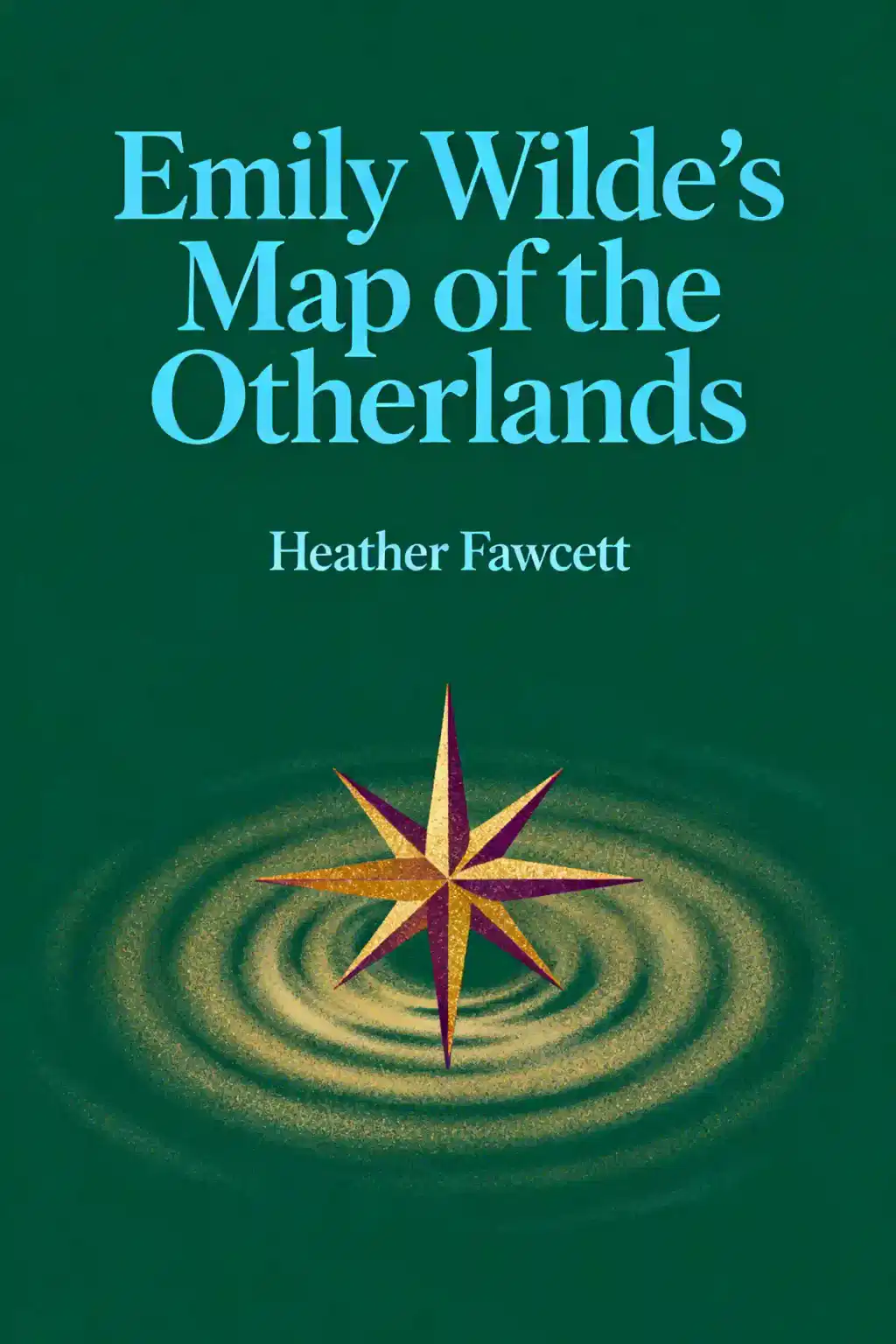What is Emily Wilde's Encyclopaedia of Faeries about?
Emily Wilde's Encyclopaedia of Faeries by Heather Fawcett follows Cambridge professor Emily Wilde, a brilliant but socially awkward dryadologist who travels to the remote Arctic village of Hrafnsvik to research faerie folklore for her encyclopaedia. When her charming academic rival Wendell Bambleby arrives unexpectedly, Emily must navigate both her fieldwork and growing suspicions that Wendell himself might be fae. Together they uncover a dangerous mystery involving villagers disappearing into the faerie otherworld.
Heather Fawcett is a New York Times, USA Today, and Sunday Times bestselling Canadian author who writes fantasy for adults, teens, and children. Born in Vancouver and now living on Vancouver Island, Fawcett holds a Master's degree in English Literature from the University of British Columbia and a Bachelor's in Archaeology from Simon Fraser University. Her books, including the Emily Wilde series, Even the Darkest Stars, and Ember and the Ice Dragons, have been translated into more than a dozen languages.
Who should read Emily Wilde's Encyclopaedia of Faeries?
Emily Wilde's Encyclopaedia of Faeries is perfect for readers who enjoy cozy academia, folklore-based fantasy, and slow-burn romance. Fans of Jonathan Strange & Mr Norrell and Holly Black's faerie books will appreciate Heather Fawcett's blend of scholarly footnotes, winter atmosphere, and mythological creatures. This book particularly appeals to readers who love anti-social protagonists, found family dynamics, and stories where academic research intertwines with magical mystery-solving.
Is Emily Wilde's Encyclopaedia of Faeries worth reading?
Emily Wilde's Encyclopaedia of Faeries is absolutely worth reading for fantasy enthusiasts seeking a fresh take on faerie lore combined with academic charm. Heather Fawcett delivers a compelling narrative featuring a wonderfully grumpy protagonist, atmospheric winter settings, and meticulously researched folklore presented through Emily's journal entries and footnotes. The novel balances cozy academic moments with genuinely dangerous faerie encounters while developing an engaging slow-burn romance that feels earned rather than forced.
What is dryadology in Emily Wilde's Encyclopaedia of Faeries?
Dryadology in Emily Wilde's Encyclopaedia of Faeries is the academic field dedicated to studying faeries scientifically. In Heather Fawcett's world, faeries are real creatures that scholars research and document through fieldwork, similar to anthropology or natural history. Emily Wilde is writing the world's first comprehensive encyclopaedia of faerie lore as a dryadologist, treating the Fair Folk as subjects worthy of serious academic inquiry rather than mere folklore.
What are the Hidden Ones in Emily Wilde's Encyclopaedia of Faeries?
The Hidden Ones in Emily Wilde's Encyclopaedia of Faeries are the most elusive category of faeries that Emily Wilde seeks to document. Also called the courtly fae or high faeries, these dangerously elegant beings lurk in the shadowy forest outside Hrafnsvik and possess the power to steal villagers into their enchanting otherworld. Unlike common cottage-dwelling Folk like brownies and kelpies, the Hidden Ones follow strict faerie laws and represent the darker, more dangerous aspects of the faerie realm.
What is the relationship between Emily Wilde and Wendell Bambleby?
Emily Wilde and Wendell Bambleby begin as academic rivals before evolving into reluctant partners in Emily Wilde's Encyclopaedia of Faeries. Wendell's charm directly contrasts with Emily's antisocial nature, yet he's the only person who can penetrate her grumpy persona. Throughout their research in Hrafnsvik, feelings develop beneath their frosty academic dynamic, especially as Emily suspects and eventually confirms that Wendell is actually a faerie prince or king.
Does Emily Wilde's Encyclopaedia of Faeries have a sequel?
Emily Wilde's Encyclopaedia of Faeries is the first book in Heather Fawcett's Emily Wilde series. The second book, Emily Wilde's Map of the Otherlands, was published in 2024, and the third installment, Emily Wilde's Compendium of Lost Tales, is scheduled for 2025. This series continues following Emily's adventures researching faerie folklore alongside Wendell Bambleby across different locations and mythological landscapes beyond Hrafnsvik.
What type of faeries appear in Emily Wilde's Encyclopaedia of Faeries?
Emily Wilde's Encyclopaedia of Faeries features diverse faerie types ranging from helpful to dangerous.
- Common Folk include brownies who assist with household tasks and kelpies inhabiting water, while courtly fae represent the aristocratic hierarchy of the faerie realm.
- Heather Fawcett draws from traditional folklore to create creatures bound by specific laws and customs, such as requiring reciprocal favors and being vulnerable to certain materials.
- The book distinguishes between whimsical cottage-dwelling faeries and the more sinister high faerie lords who abduct humans.
How does Emily Wilde's Encyclopaedia of Faeries compare to other faerie fantasy books?
Emily Wilde's Encyclopaedia of Faeries by Heather Fawcett combines the scholarly depth of Jonathan Strange & Mr Norrell with the dark faerie aesthetic of Holly Black's work. Unlike typical faerie romance, this book prioritizes academic worldbuilding through journal entries, footnotes, and field observations that ground the magic in folklore research. The cozy winter atmosphere and slow-burn romance distinguish it from darker urban fantasy, while Emily's antisocial personality offers a refreshing alternative to charming, socially adept protagonists common in the genre.
What makes Emily Wilde a unique protagonist?
Emily Wilde stands out as a brilliantly flawed protagonist who excels at faerie scholarship but struggles with basic social interactions. Heather Fawcett crafted a curmudgeonly professor who prefers books, her dog Shadow, and the Fair Folk over human company, making her notoriously bad at small talk and unlikely to receive party invitations. Her meticulous research methods and genius-level intellect contrast sharply with her emotional awkwardness, creating internal conflict as she develops unexpected attachments to both the villagers of Hrafnsvik and Wendell Bambleby.
What is the setting of Emily Wilde's Encyclopaedia of Faeries?
Emily Wilde's Encyclopaedia of Faeries takes place primarily in Hrafnsvik, a hardscrabble village in Ljosland, a fictional region inspired by Arctic Norway. Heather Fawcett creates an atmospheric winter wonderland where snow-covered forests harbor dangerous faerie portals and cozy cottages provide refuge from both the elements and supernatural threats. The isolated, harsh landscape mirrors Emily's emotional isolation while providing the perfect environment for encounters with folklore creatures that thrive in cold, remote locations far from modern civilization.














